AI and atoms: How artificial intelligence is revolutionizing nuclear material
By Jingjie He, Nikita Degtyarev | September 11, 2023
AI and atoms: How artificial intelligence is revolutionizing nuclear material
By Jingjie He, Nikita Degtyarev | September 11, 2023
Over the last decade, there has been an accelerated integration of artificial intelligence (AI)[1] into both the civilian and military fields. As a result, rising attention to the challenges of AI governance has manifested in three ways. The first challenge lies in the dual-use nature of AI in the civilian and military domains, which renders it difficult to monitor and oversee its militarization. The second derives from the policy-influencing power of the private sector, which has traditionally been limited to utilizing lobbying instruments. The final difficulty results from the changing nature of government-industry relations, where industries are leading the development and application of AI, and governments are falling behind industry in understanding its technological potential and regulating military applications.
A review of existing literature demonstrates that AI is well discussed within the military and broader strategic stability domain[2], including discussions surrounding AI use within the nuclear sphere to hack cyber systems, poison AI training data, and manipulate its inputs (Avin and Amadae 2019). The expert community further addresses AI and its applicability to nuclear safeguards.[3] However, current available research largely ignores nuclear material production (NMP), which is an essential phase in the development of nuclear weapons
This article bridges that gap by assessing the potential role of AI in nuclear material production while considering industrial practices.[4] In employing an industrial approach to technology scouting, we argue that AI has significant potential to improve nuclear material production by enhancing system efficiencies with the aim of optimizing output, reducing costs, and boosting safety in production associated with the development and production of nuclear weapons. A comprehensive list of the existing AI applications to nuclear material production-critical equipment and to related non-nuclear industry applications integrable to the nuclear material production is presented in Appendix 1, (immediately below the main text).
The AI-powered nuclear material production process raises concerns of the illicit and covert development of nuclear weapons. Therefore, a three-fold solution with feasible action plans is discussed in the final section. Although nuclear material production is the focus of this article, the findings, concerns, and solutions being addressed are also applicable to the broader debate on the production of material used to build weapons of mass destruction, including radiological, biological, and chemical weapons.
Proliferation-sensitive stages in nuclear material production
Nuclear material production consists of several steps, including mining and milling, conversion, enrichment, fuel fabrication, electricity generation, spent fuel storage, and reprocessing.[5] While each production step is important, the enrichment and reprocessing phases are the most proliferation sensitive phases. These phases provide the basis for enriching uranium and/or the separating the uranium and plutonium isotopes that are pillars[6] integral to the development of a nuclear weapon; thus, improved accessibility to these technologies through AI presents both horizontal and vertical proliferation risks[7] (Gartzke and Kroenig 2014).
Although the application of AI within the enrichment and reprocessing phases is an ongoing effort to further the application of nuclear science and technology for good, AI as a dual-use technology within nuclear material production space has been largely neglected within the academic and practitioner communities. Therefore, a widening opportunity for AI to aid in illicit and covert non-peaceful applications exists.
AI’s potential applications in the nuclear material production
Industrial applications of AI can be broadly divided into three categories: anomaly detection, automated optimization, and automated discovery. Each of these techniques has functioned and been applied in civilian industries, and each can affect proliferation-sensitive stages of nuclear material production. A summary of the key potential application of AI in the nuclear material production is illustrated in Table 1 with potential use cases specified in Appendix 1.
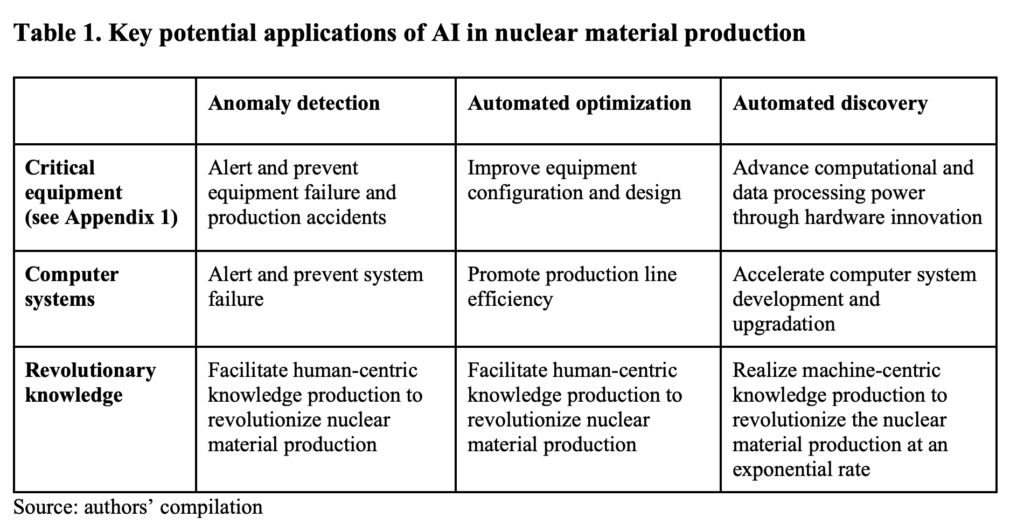
Anomaly detection. An AI anomaly-detection algorithm is trained to recognize machine or system data featuring “normal behaviors.” When real-time data deviates from the normality pattern, the AI algorithm will identify the anomaly. Early-stage defection alarms make inspection and fixation possible before mechanical or system breakdown.
The use cases of AI anomaly detection fall into two categories. First, AI is used by industries to monitor, detect, and diagnose faults in machines. An example is the anomaly detection of centrifugal pumps (Al Tobi et al. 2022; Nabli and Hassani 2009). Second, AI is also widely applied in cyber defense products to detect anomalies led by cyberattacks or infections, which is a growing threat to sophisticated nuclear programs (Al Tobi et al. 2022; Nabli and Hassani 2009). An example is General Electric’s AI cyber defense solution, Digital Ghost, which serves the US Department of Energy, an agency responsible for managing the nation’s enriched uranium supply, in protecting critical infrastructure (General Electric n.d.a).
The aforementioned applications can be readily integrated into the nuclear material production process, provided that the training, testing, and verification data of the critical machines and computer systems involved in the producing process are accessible. Specific applications include adopting AI anomaly detection solutions to prevent failure of critical nuclear material production equipment (like centrifuges) and computer systems (such as management or cyber defense systems). Similar AI solutions can also advance efficiency and safety in human-centric knowledge production processes that facilitate nuclear material production (like advanced fissile isotope separation methods[8]).
Automated optimization. Automated optimization solutions train AI algorithms to analyze data with predefined parameters in an industrial process. Based on this analysis, the algorithms can predict product quality and correct problematic parameters to improve it. When applied to complex systems, AI algorithms can set up many factors at different levels, simulate their performance, and identify the best combination for achieving optimized solutions.
The use cases of AI automated optimization in civilian industries are three-fold. The first is industrial production. For instance, artificial neural networks, a type of deep learning algorithm, are used to monitor and adjust the performance of centrifuges in the separation processes (Funes et al. 2009; Jiménez et al. 2008; Menesklou et al. 2021). The second is industrial design. Examples include determining the optimum configuration for race cars used in different races (Monolith AI n.d.), the optimum design of computer chips (Mirhoseini et al. 2021), and the optimum shape for the crown of a piston in a diesel engine (Bogaisky 2019). The third is logistic planning. Examples of this include the reduction of the airplane turnaround time and the optimization of delivery fleet routing (General Electric n.d.b; Google n.d.).
These AI optimization solutions can also be integrated into the nuclear material production with the availability of machine or system data. This has already been applied to optimize the dimensions of a rotating baffle in gas centrifuges for uranium enrichment (Migliavacca et al. 2002). Further potential nuclear material production use cases include improvement of machine, such as nuclear centrifuges, configuration; the design of machine (including centrifuge) parts; and the efficiency of the nuclear material production lines, such as the arrangement of centrifuge cascades and the broader management of the nuclear material production process. Other human-centric nuclear research can also benefit from automated optimization solutions, which may in turn revolutionize the nuclear material production.
Automated discovery. AI algorithms are trained to understand the rules of a game by identifying key parameters at an initial stage, then developing their own algorithms to determine the best solution for the game. For example, from playing games like AlphaGo, AlphaZero (Silver et al. 2017; Silver et al. 2018), to protein structure prediction, such as AlphaFold (Jumper et al. 2021), code generation (e.g., AlphaCode) (Li et al. 2022), and faster matrix multiplication discovery (e.g., AlphaTensor) (Fawzi et al. 2022), AI has demonstrated its capability to revolutionize the scientific world at an exponential rate. Nevertheless, in the nuclear sciences, the application of automated discovery remains in early development stages. Consequently, few existing industrial applications are ready to be integrated into the nuclear material production or even feasibility research.[9]
Automated discovery techniques not only advance computational and data processing power through hardware (examples include AI chips and computers) innovation, but also accelerate the development and upgradation of computer systems through automatic code generation (such as in cyber defense or industrial management systems). More significantly, the technique foresees the realization of machine-centric nuclear material knowledge production, as in the case of protein structure prediction[10], which accelerates the speed and accuracy of human-based research, for instance on new fissile isotope separation methods[11] and more efficient materials[12]. Automated discovery has the most potential among the three AI applications mentioned; as such applications advance, they could fundamentally affect the entirety of the nuclear material production lifecycle process.
The way forward
As demonstrated, AI has already impacted several stages of nuclear material production, and its premise as a dual-use technology must be properly managed. While this endeavor requires an all-out effort from all involved parties, the scope of this discussion may focus on a three-dimensional solution.
Recommendation 1: State actors should be responsible for designing and executing effective nuclear material production-related data and infrastructure governance.
To account for the emergence of new dual-use technologies such as AI, existing legal and non-legal frameworks need to evolve.[13] However, the current political environment has constrained global consensus-building, even in cases where reaching consensus benefits all parties.[14] Nonetheless, states remain decisive actors in monitoring and regulating dual-use applications of AI as it relates to nuclear material production.
The scope of monitoring and regulating dual-use applications of AI should exclude AI algorithms; they are open-sourced and globally accessible, and therefore, essentially impossible to monitor and regulate. Instead, the scope should focus on two AI-supporting elements, the first of which is data. Since the precision of an AI solution depends on the quality and quantity of the training and testing data, the transfer of sensitive data around nuclear material production, including the peaceful production of nuclear material, should be safeguarded through enacting proper regulatory measures on technologies, data transfer, and security standards like cybersecurity.[15] The second focus should be on information infrastructure. As the function of AI-powered systems depend on advanced information infrastructures, including fast-speed broadband, cloud storage, AI chips, and supercomputers, among other things, the acquisition and transfer of these critical AI infrastructures should also be monitored. Therefore, export control of AI systems should focus on the transfer of training and testing data, as well as supporting infrastructure.
Data and infrastructure governance can be achieved via unilateral, bilateral, or multilateral solutions, as well as informal and formal means. A ready-to-implement platform is national export control regimes. Hitherto, the United States, the European Union, Russia, the People’s Republic of China, and other political entities with nuclear capabilities have increasingly fortified national legislation around functional export control mechanisms for technologies and data critical to their national security interests (Pacific Northwest National Laboratory, n.d.; PRC 2017; PRC 2020; PRC 2021; European Union 2021; Federal Service for Technical and Export Control of Russia n.d.; Vladimirova et al. 2014). In addition to unilateral efforts, states should also pursue related multilateral discussions based on a shared interest in improving AI-specific export control regime mechanisms, rather than enabling diverging political positions to hinder such discussions (Fisher 1991). An existing conduit for facilitating discussions and future negotiations in this regard is the Nuclear Suppliers Group (NSG), where member state participants agreed to voluntarily implement “guidelines for nuclear exports and nuclear-related exports” (Nuclear Suppliers Group n.d.a).[16]
Recommendation 2: The non-proliferation sector should develop an AI-proficient workforce supported by external AI industry partnerships.
State actors, nongovernmental organizations, and intergovernmental organizations within the nuclear domain have had limited interaction with AI experts, resulting in a knowledge gap that can be reduced through collective discussions.[17] As such, building awareness and sustainable partnerships, both formal and informal, is vital.
To mobilize industry engagement in the non-proliferation sphere, a three-step approach should be taken by states, nongovernmental organizations, and intergovernmental organizations. First, researchers and scientists must develop and maintain a comprehensive understanding regarding the state-of-the-art AI research as well as most advanced industrial use cases associated with the nuclear material production. A visualized example is illustrated in Appendix 1. This can be self-initiated or under institutional cooperation[18]. Ideally, a fully developed table, as illustrated in Appendix 1, summarizing AI’s applicability to nuclear material production would be shared within the nuclear policy making community to develop a shared understanding on the subject, which in turn could serve as the foundation for future policy discussions.
Second, platforms and initiatives must be created and expanded to integrate the AI-related industry into the nuclear policy debate. For example, several United Nations (UN)-based organizations initiated an “AI for Good” program to identify and promote AI applications that accelerate the furtherment of the United Nations Sustainable Development Goals (UN SDGs). A recent sub-initiative, entitled “AI for Atom,” addresses AI applications, methodologies, and tools that can advance nuclear science and technology (Peeva 2021). However, the impact of AI on nuclear material production and modernization, as well as its potential risks, has yet to be addressed. The broader “AI for Good” program could be expanded to include AI industrial partners to facilitate knowledge exchange around dual-use applications of AI and their potential implications in maintaining the non-proliferation regime.
Third, industrial advisory boards must be established within the relevant policy-making bodies. These advisory boards would serve two purposes: the minimization of the AI knowledge gap and the creation of effective export control guidelines. This effort could rely on intergovernmental organizations— including the International Atomic Energy Agency and the UN Office for Disarmament Affairs, and by extension, the Wassenaar Arrangement and World Customs Organization—to promote discussions around emerging technologies and their potential implications for the maintenance of the non-proliferation regime. Meanwhile, the Nuclear Suppliers Group, as a binding mechanism, presents another means for member states to create effective export control guidelines through the inclusion of an industrial advisory board.[19]
Recommendation 3: Civil society and the international community should promote ethical AI as a means to incentivize government- and self-compliance in the AI industry.
Industries do not always comply with states’ policy goals or collective interests. Therefore, measures should be taken to stimulate industry compliance and engagement in non-proliferation efforts. Building a narrative that encourages compliance with AI ethical guidelines and regulations may involve highlighting the reputational costs of failing to comply and supporting the moral considerations of employees; such efforts could require outreach programs and government action (Stewart et al. 2016). For example, demonstrable industry-based association with the UN sustainable development goals has become increasingly important as companies manage employee and customer expectations surrounding sustainability, integrity, and values in an increasingly global and competitive market (United Nations Global Compact n.d.). Some of the leading suppliers of AI technology, including Amazon (Amazon n.d.), IBM (IBM 2018), and C3.ai (C3.ai n.d.), have expanded their business model to this end. Thus, the UN’s sustainability goals are promising instruments for governments, nongovernmental organizations, and intergovernmental organizations to leverage when negotiating for transparency and accountability within the AI industry.
Civil society organizations must be fully aware of their responsibility as gatekeepers of the non-proliferation regime and utilize their influence to counteract governmental policy preferences and industrial incentives that have the potential to negatively affect the effectiveness of efforts to manage the risk associated with AI’s use in nuclear materials processing. The first step toward achieving this goal is to increase civil society’s efforts to expose the potential of AI-driven industrial activities to increase the proliferation of nuclear material. The second step is to translate the policy preferences of civil society into customer-based reputational costs for the AI industry. For example, civil society groups could foster a grassroots initiative that encourages companies to agree to report end-users when transferring data, AI-powered systems, and supporting infrastructures with a potential to facilitate high-enriched uranium and plutonium production. Such an effort could stimulate market self-regulation, as companies see a way to reduce the possibility of reputational damage by adhering to the precepts of the UN’s AI for Good and Sustainable Development Goals programs.
Appendix 1. Existing AI applications to nuclear material production critical equipment and to non-nuclear industry integrable to the nuclear material production. (Click images below to enlarge, or download PDF.)
Disclaimer
The views presented in this article are those of the authors alone and do not represent the views of the organizations or institutions with which they are affiliated.
Acknowledgements
This research has been conducted as a project of the Arms Control Negotiation Academy (ACONA) led by Harvard University’s Davis Center for Russian and Eurasian Studies. We thank Adlan R. Margoev, Dmitry Kovchegin, Maria Roskoshnaya, Isaac Ben-Israel, our ACONA colleagues, and anonymous contributors and reviewers for their insightful and constructive comments.
Endnotes
[1] Artificial Intelligence (AI) refers to a collection of computer systems capable of empowering machines to generate human-like knowledge through data-driven training. The concept of AI emerged in the 1950s and was realized with the introduction of machine learning in the 1990s and deep learning in the 2000s.
[2] AI is analyzed as part of the decision-support system (without direct participation in nuclear launch) (Geist and Lohn 2018); intelligence, surveillance, and reconnaissance (ISR) (especially helpful in antisubmarine warfare and tracking mobile ICBM) (Geist and Lohn 2018); automated target recognition and terminal guidance (Rickli 2019); autonomous nuclear-weapon system (Geist and Lohn 2018); and delivery and defense systems used against nuclear attacks (including warning system) (Vincent 2019). There are three main views on AI and strategic stability. One viewpoint argues that creating AI-based technologies capable of undermining nuclear deterrence is challenging. In contrast, the second asserts that AI-based technologies will be capable of such tasks in the future (Rickli 2019; Avin and Amadae 2019), thus causing an arms race and strategic instability. The third point of view stands between the previous arguments claiming that AI has destabilizing and stabilizing effects (Horowitz 2019; Geist and Lohn 2018; Kaspersen and King 2019).
[3] For instance, research by the Vienna Center for Disarmament and Non-Proliferation recognizes that AI could increase efficiency in the analysis of large amounts of information, as demonstrated by the International Atomic Energy Agency’s current use of AI techniques to categorize data, detect changes, and process natural language through its collaborative analysis platform (Rockwood et al. 2021, 48).
[4] Today, technical giants are principal players in the development and delivery of AI. Yet, these key stakeholders have, to date, had limited influence in government-initiated policy discussions around the risk of the proliferation of AI to furthering weapons mass destruction capabilities. The inclusion of the private sector in these discussions, while simultaneously balancing the necessity to innovate for peaceful purposes is an important mechanism for constructing an effective non-proliferation regime, of informal or formal means.
[5] Today’s NMP most commonly uses uranium, a naturally occurring element. Natural uranium (U) is predominantly composed of two isotopes, U-238 (99.3 percent) and U-235 (0.7 percent); however, in order to sustain a nuclear reactor, uranium fuel must contain about four times as much U-235 as is found in natural uranium. As such, enrichment of U-235 to 3 to 5 percent is necessary and most pursued using gas centrifuge technology. Following enrichment, the fuel is fabricated into a structure, such as a fuel assembly, that enables it to be burned inside a nuclear reactor. The reactor, however, only uses a very small amount of the total nuclear material before the fuel is discharged, and therefore, much of the nuclear material, predominantly uranium and plutonium isotopes, in the discharged fuel, or more commonly known as spent fuel, can be reused. In order to facilitate its reuse, the uranium, plutonium, and waste products found in spent fuel are chemically separated and the plutonium (Pu) and uranium are re-introduced into the NMP process enabling it to begin again.
[6] Fissile isotopes of uranium and plutonium are foundational to the development of a nuclear weapon or other explosive device, and thus, require the enrichment of U-235 using centrifugal technology, the production of plutonium-239 through the irradiation of uranium, and/or the production of U-233 through the irradiation of thorium-232 (Council on Foreign Relations n.d.). Fissile isotopes, Pu-239 and U-233, must then undergo chemical separation through an operation called reprocessing, as fissile nuclear material, whether plutonium or uranium based. This nuclear material is then integrated into a weapons system, which generally includes a casing, reflector, communication system, and trigger components. Following which, the configuration is tested to determine its effectiveness (Cochran et al. 2022).
[7] “Horizontal proliferation is the spread of nuclear weapons to new countries through banning the trade of nuclear arms and …stop[ping] any capability …. for producing nuclear weapons”, whereas “vertical proliferation refers to the advancement and stockpiling of nuclear weapons (The Nuclear Times 2016).
[8] For relevant research, see Kerman 2022a.
[9] Examples of existing research are limited but include the use of automated discovery to accelerate decision making as it relates to the selection of optimal alloy concentration for use in nuclear fuel cladding (University of California – Berkeley Nuclear Engineering, n.d.).
[10] Protein structure prediction is important to the development of vaccines, but at the same time, this technology, without proper regulatory controls, could also enhance the production, delivery, and accessibility of bioweapons.
[11] For relevant research, see Kerman 2022a.
[12] For relevant research, see University of California – Berkeley Nuclear Engineering, n.d.
[13] An example of a legal framework is the Additional Protocol (International Atomic Energy Agency, 1997) and an example of a non-legal framework is the Nuclear Suppliers Group guidelines (Nuclear Suppliers Group n.d.b).
[14] For example, in 2021, many states, including the United States and Russia, worked together in the framework of an Open-Ended Working Group on developments in the field of information and telecommunications to create a code of responsible behavior in cyberspace in the context of international security. Despite having built consensus around a viable solution, States ultimately submitted two competing resolutions to the UN General Assembly as a result of diverging opinions on the war in Ukraine (Chernenko 2022).
[15] While the existing international framework and many state specific legal frameworks safeguard the transfer of sensitive nuclear technology, such as sensitive datasets, increasingly sophisticated cyber security threats and th industry’s inability to sufficiently safeguard against such threats is well recognized (Nuclear Threat Initiative, n.d.).
[16] Maria Roskoshnaya, head of Export Control Department at Rosatom, affirmed in personal communication with the authors that AI is currently not being discussed within the context of improving NSG-issued export control guidelines (Roskoshnaya 2023). There are no publicly available documents with reference to AI on the NSG website.
[17] Maria Roskoshnaya indicates that ongoing informal discussions with industry and academia is not always fruitful given that the regulator does not always have the full amount of information nor understanding of advanced technologies related to AI (Roskoshnaya 2023).
[18] The United States Nuclear Regulatory Commission (NRC) has initiated a plan to develop an AI proficient workforce under their AI Strategic Plan beginning in 2023 (Dennis et al. 2022).
[19] The NSG currently encourages national authorities to work closely with industry to ensure effective export control regimes (Nuclear Suppliers Group n.d.a) but does not offer a mechanism for internalizing this suggestion.
Together, we make the world safer.
The Bulletin elevates expert voices above the noise. But as an independent nonprofit organization, our operations depend on the support of readers like you. Help us continue to deliver quality journalism that holds leaders accountable. Your support of our work at any level is important. In return, we promise our coverage will be understandable, influential, vigilant, solution-oriented, and fair-minded. Together we can make a difference.
Keywords: AI, non proliferation, nuclear, nuclear material, proliferation
Topics: Artificial Intelligence, Disruptive Technologies
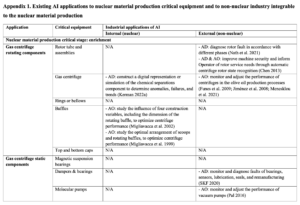
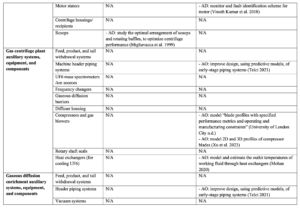
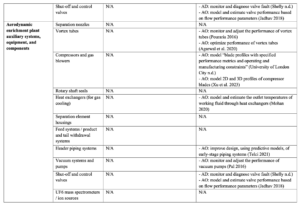
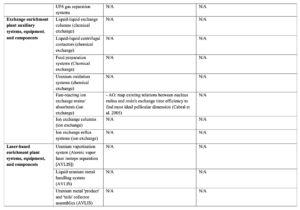
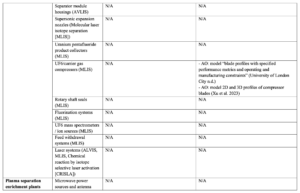
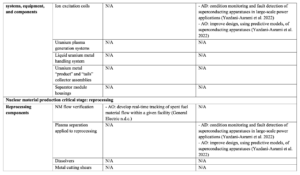
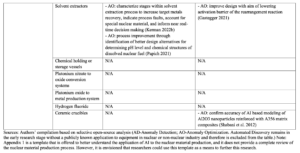
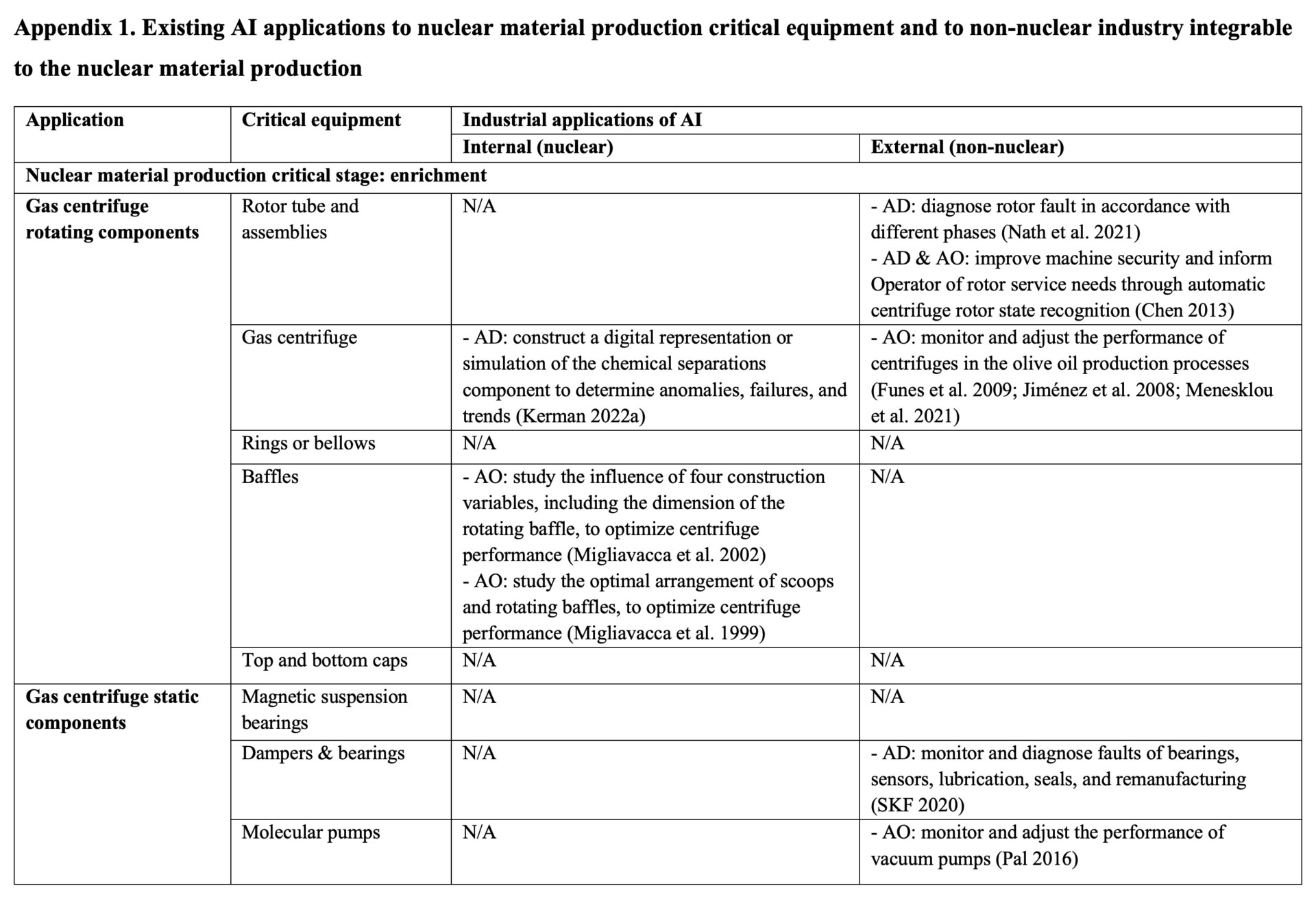
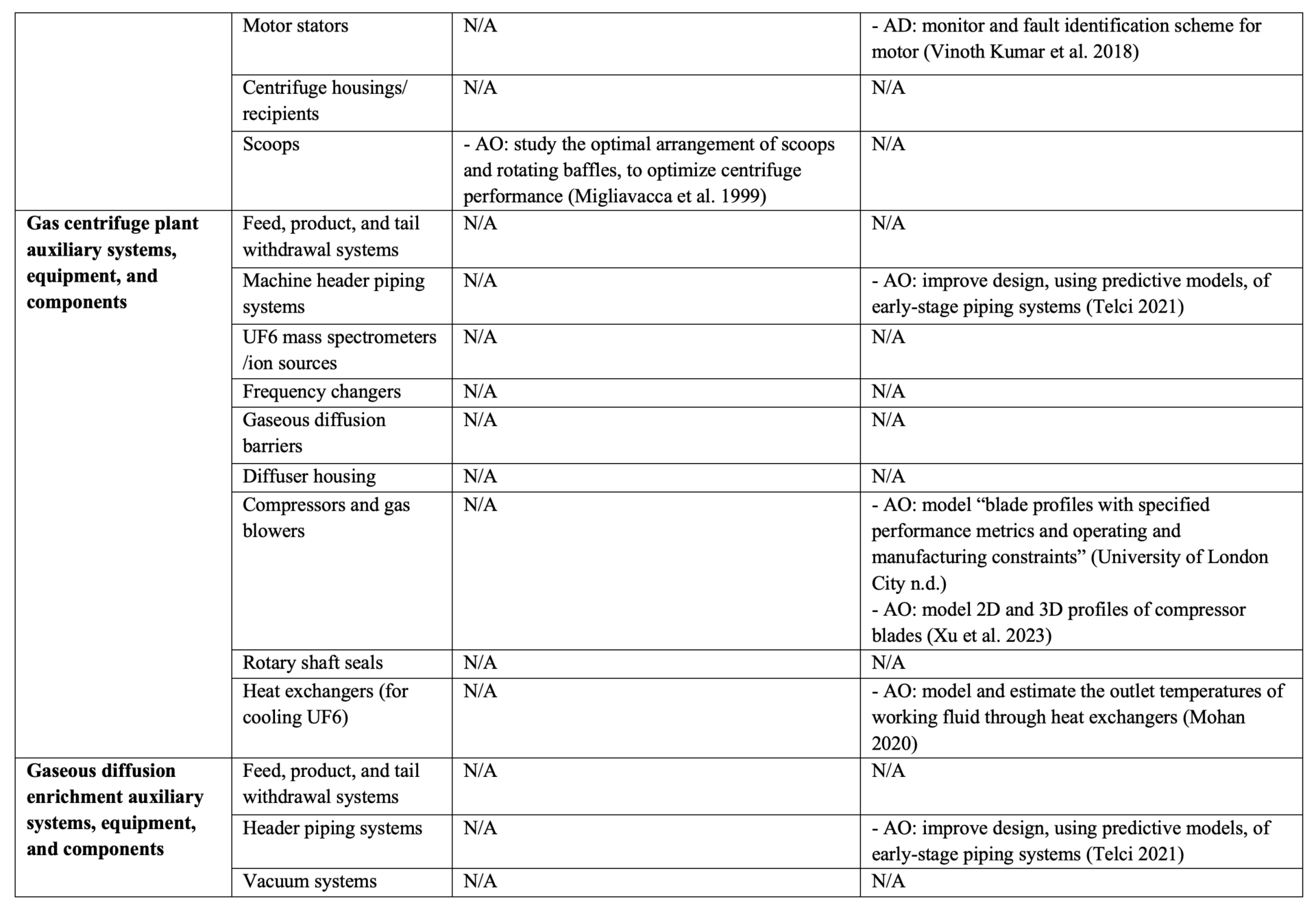
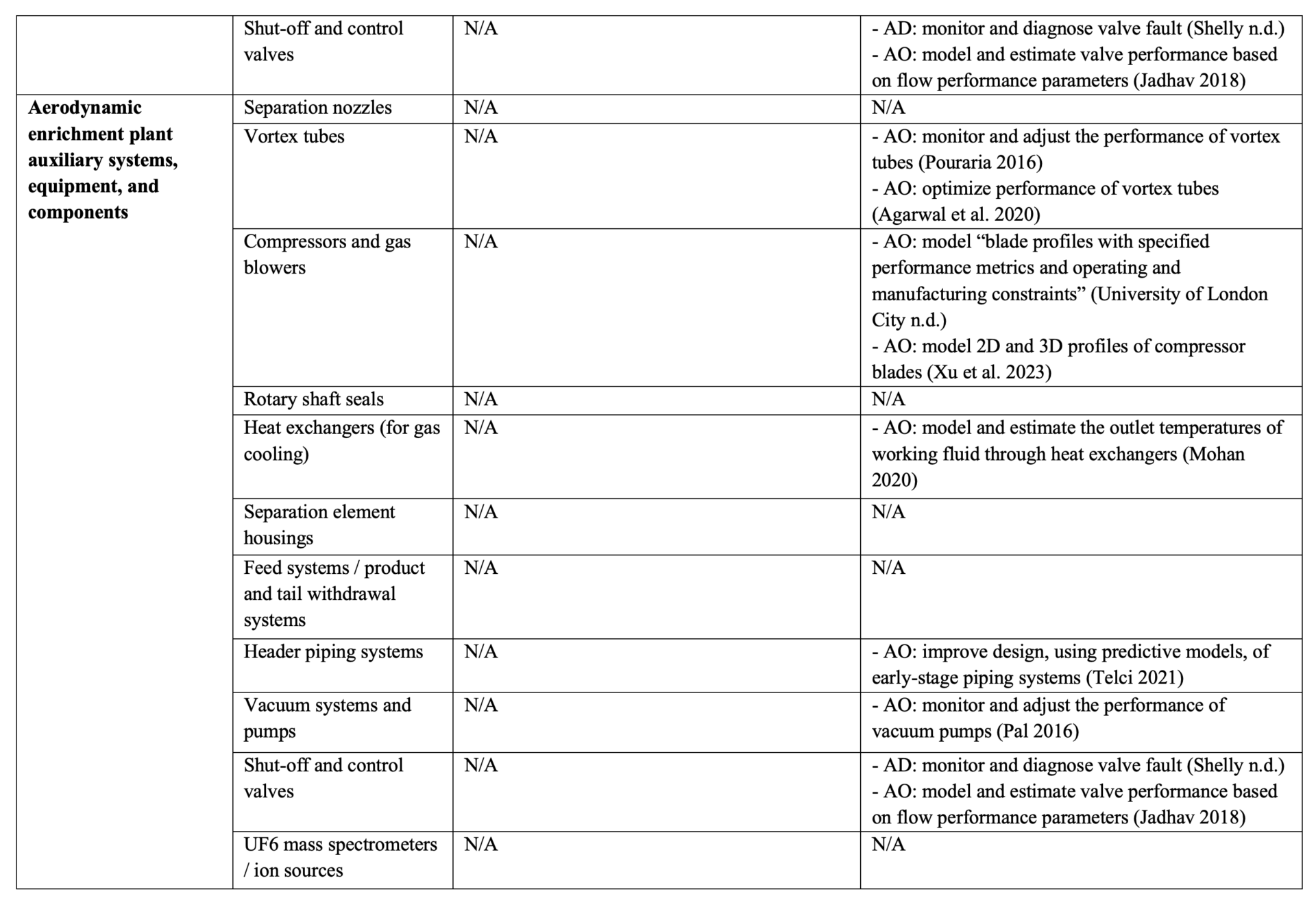
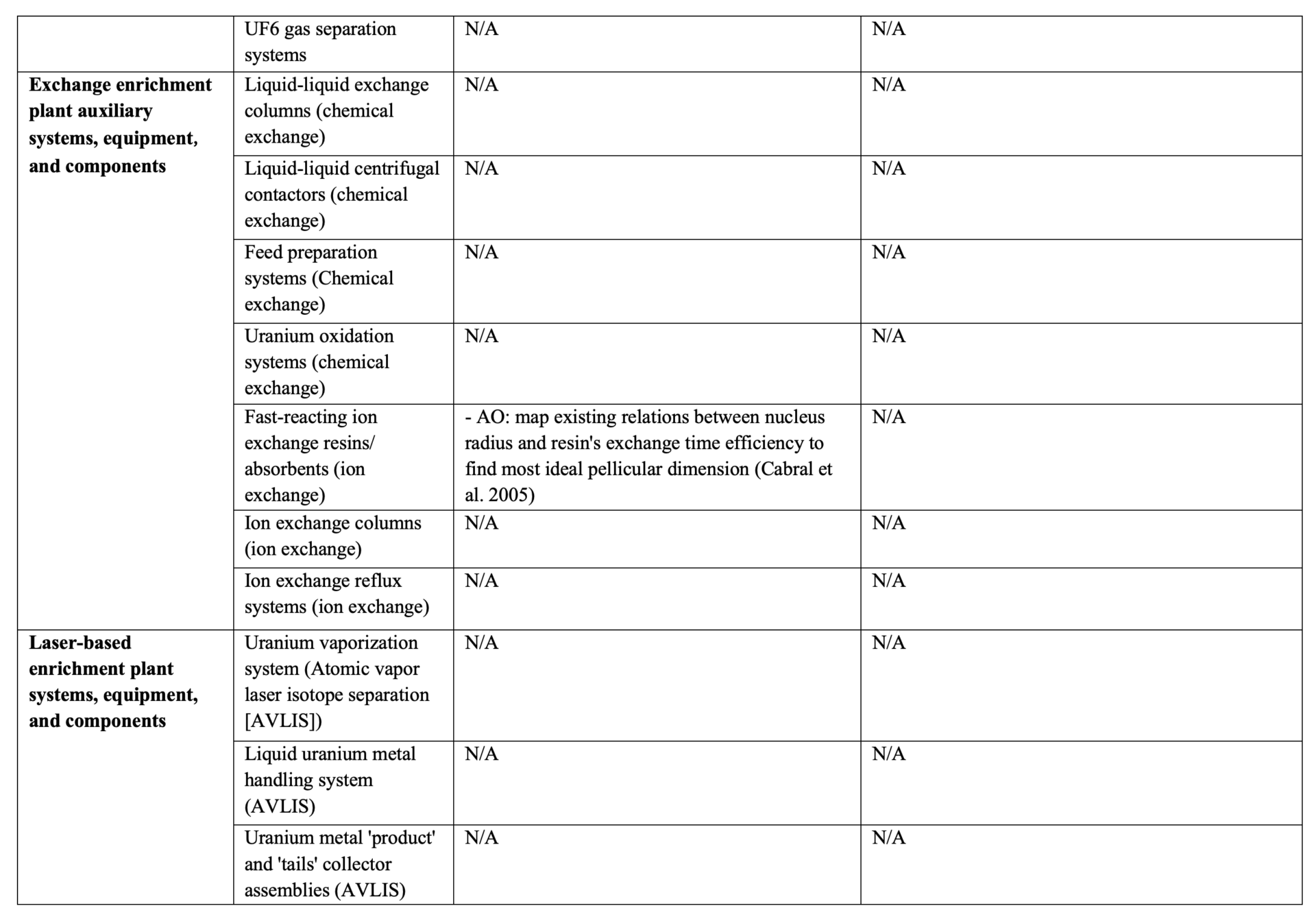
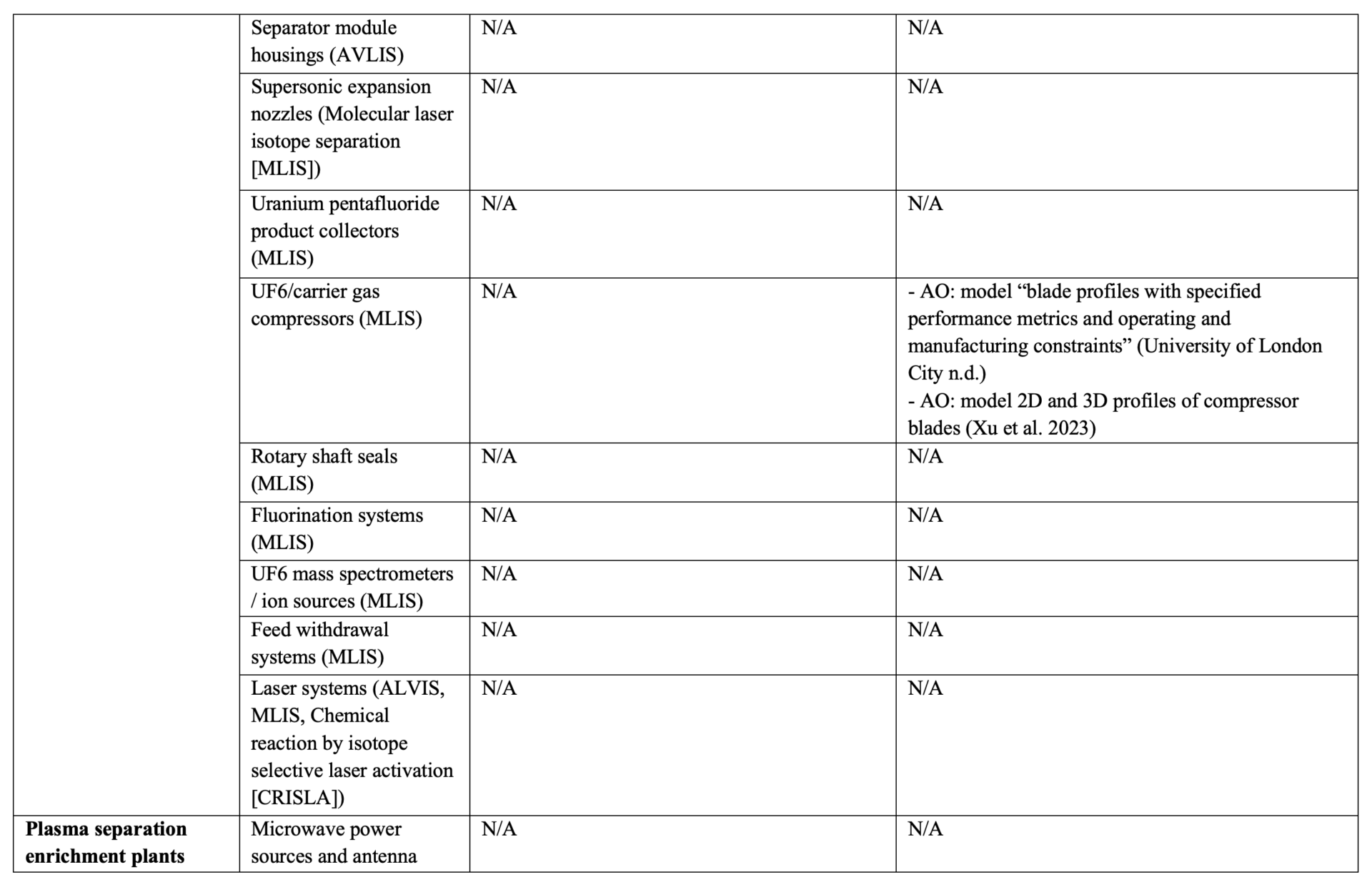
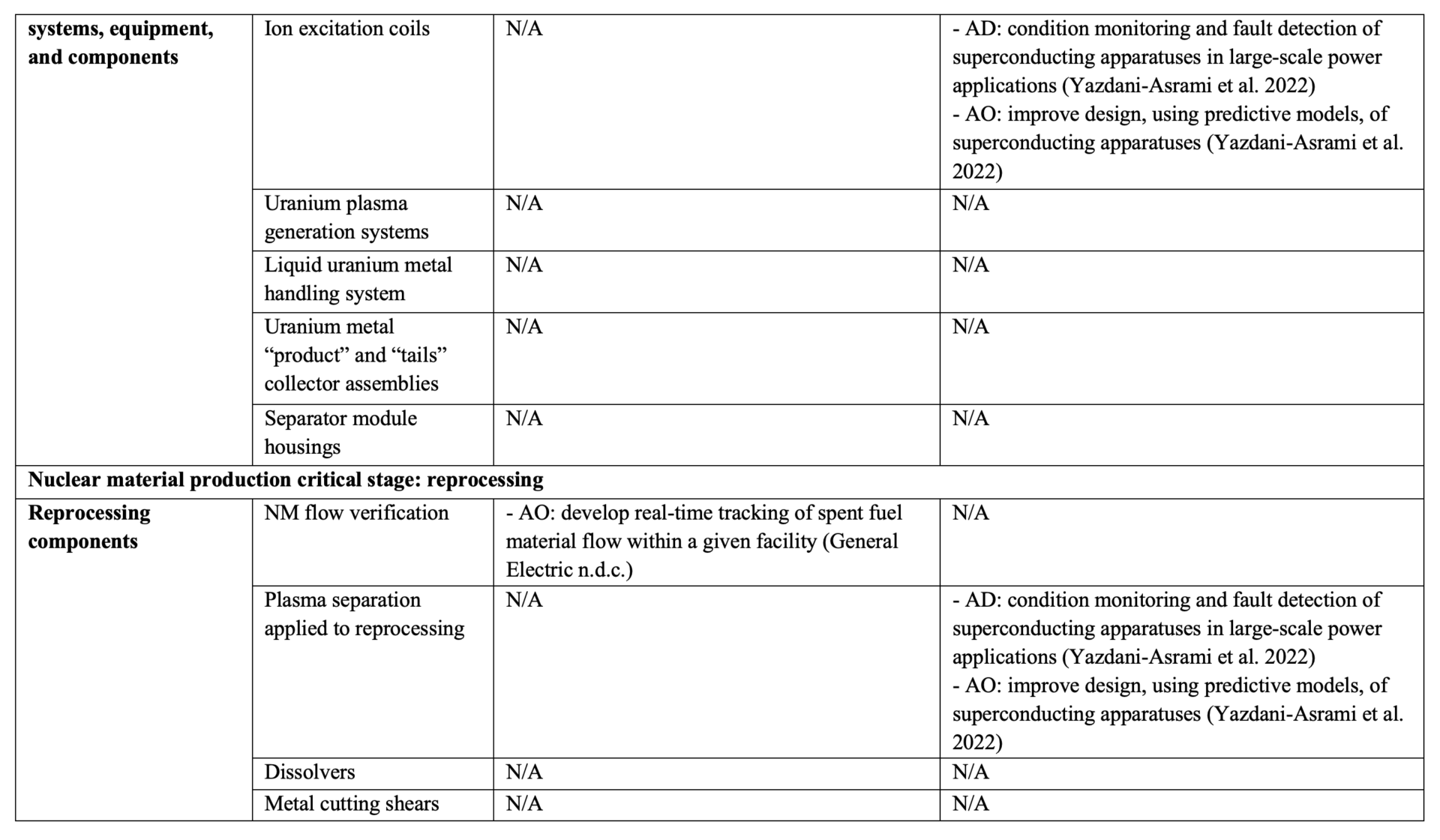
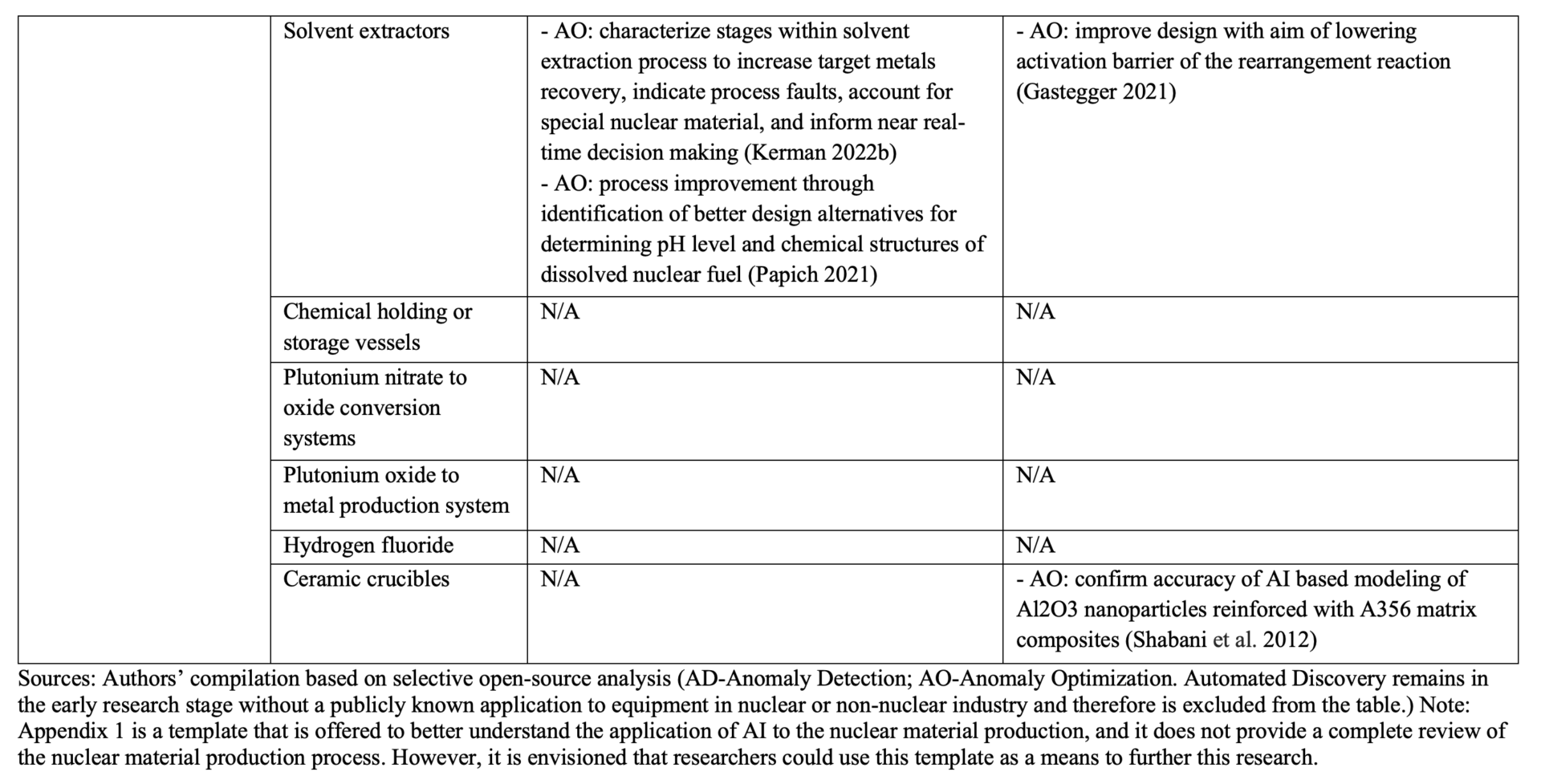


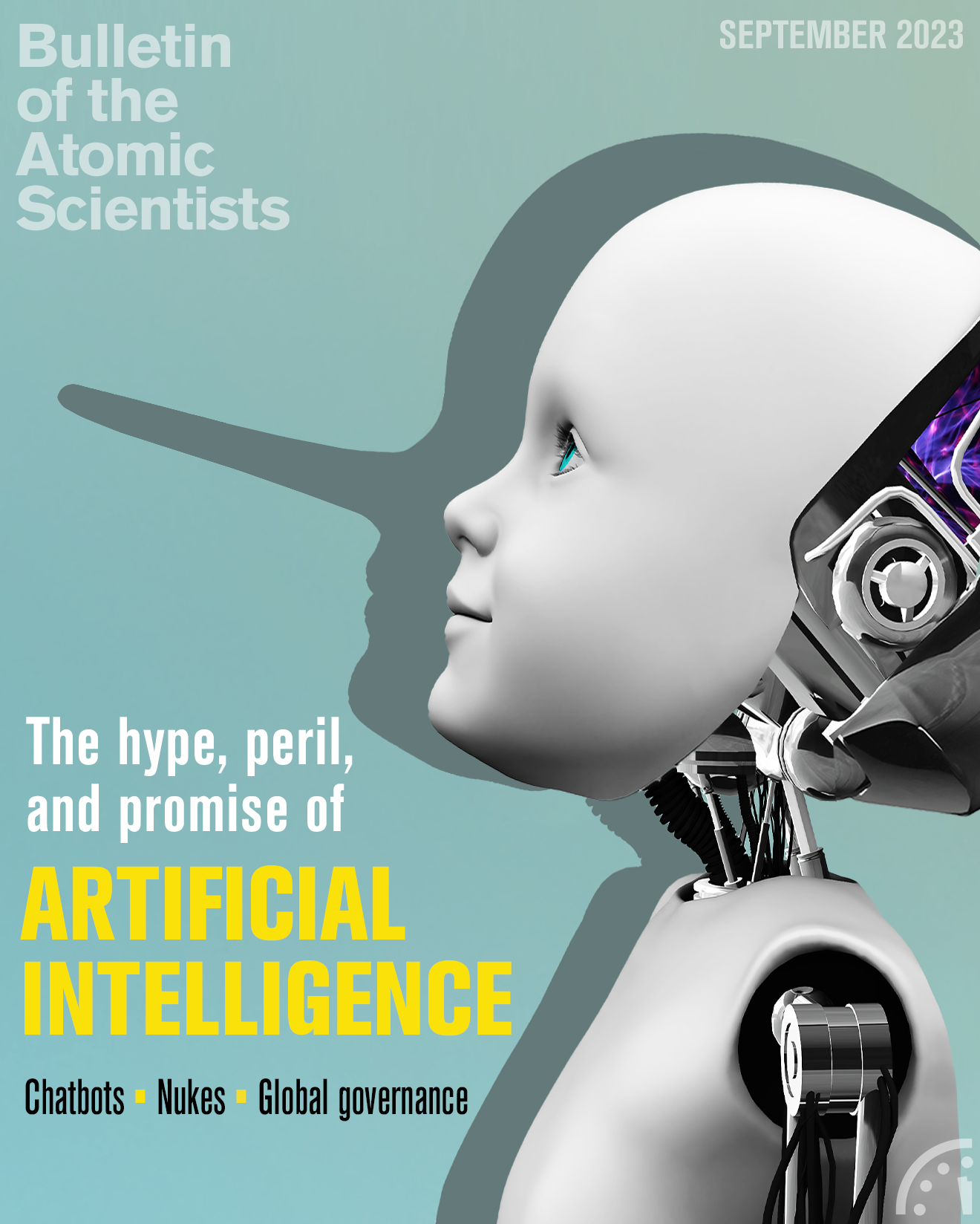


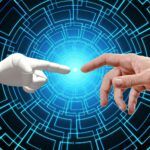

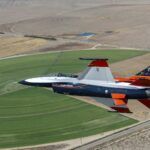
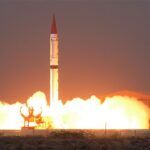









In my 40+ years as an anti-nuclear activist this article frightens and sickens me more than any experience since I first heard Dr. Helen Caldicott tell what would happen if a nuclear bomb exploded. That was 1979. Arlington Street Church in Boston. No, actually reading this article is worse! At least the scenario Dr. Caldicott warned against would take place among HUMAN BEINGS — who could perhaps be reasoned with. I’ve done everything I could think of to End the Whole Nuclear Era since I heard Helen speak. Including writing 2 plays, a short novel, and making youtube videos. What… Read more »